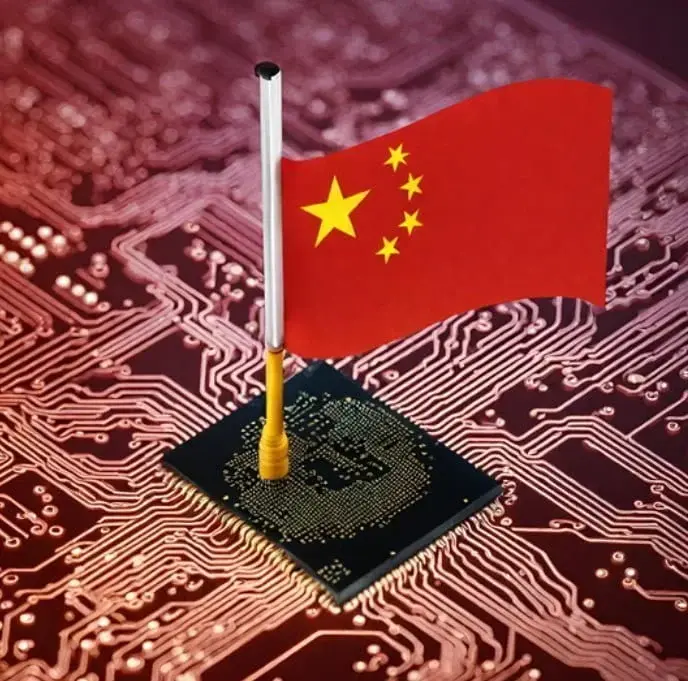Challenges Confronting China’s Semiconductor Industry Amid US Tech Sanctions
In 2023, the semiconductor industry in China faced significant hurdles due to escalating technology sanctions imposed by the United States. These sanctions imposed tighter restrictions on China’s ability to procure cutting-edge chip manufacturing tools and artificial intelligence processors. As part of this initiative, the US extended its export controls on equipment used in semiconductor wafer fabrication in October, strategically limiting China’s access to less advanced Nvidia data center chips. Additionally, Japan and the Netherlands joined in by restricting exports of sophisticated semiconductor tools, thereby exacerbating China’s susceptibility within its chip supply chain.
China’s Reaction to Imposed Sanctions
In response to these adversities, China intensified its endeavors to achieve self-reliance in semiconductor production. The country allocated state funding to bolster domestic efforts in producing less advanced tools and components, which resulted in significant advancements. Nonetheless, the development of state-of-the-art lithography systems essential for advanced integrated circuits persisted as a formidable challenge.
Breakthrough in Lithography System Development
In a noteworthy breakthrough, Shanghai Micro Electronics Equipment (SMEE), supported by state-owned Shanghai Zhangjiang Group, unveiled China’s inaugural 28-nm lithography system. While not on par with cutting-edge EUV lithography systems, this achievement signified a pivotal milestone in China’s emphasis on established chip technology.
Investment in Established Process Nodes
Given the constraints on acquiring advanced tools from Western sources, China is projected to continue investing in established process nodes, particularly those at 28 nm and utilizing older technologies. By the conclusion of 2024, production capability for established chip manufacturing is anticipated to expand in 32 Chinese fabs, leading to a substantial growth in China’s global share of established capacity. According to TrendForce, China’s worldwide share of established capacity is expected to reach 39% by 2027, prompting concerns from the European Union and the United States.
Global Challenges Impacting Chinese Semiconductor Producers
Despite China’s initiatives, the semiconductor landscape encountered global challenges in 2023, affecting Chinese chip manufacturers as well. SMIC witnessed a 15% year-on-year revenue decline in the third quarter, while Hua Hong Semiconductor reported a 9.7% revenue decrease. These demanding market conditions were attributed to dwindling chip demand and increased stockpiles of consumer and mobile devices.
Examination of the US Semiconductor Supply Chain
In response to the hurdles faced by the semiconductor industry, the US Department of Commerce initiated a review of the Semiconductor Supply Chain. The objective of this review is to address national security concerns linked to chips sourced from China. It aims to identify how US companies procure legacy chips and is part of a broader initiative to allocate nearly $40 billion in subsidies for semiconductor chip production. Gina Raimondo, the Secretary of Commerce, expressed apprehensions regarding China’s expansion in legacy chip manufacturing, framing it as a national security issue.
China’s Response to the US Supply Chain Assessment
The Chinese embassy in Washington accused the US of broadening the scope of national security and engaging in discriminatory practices. The report from the Commerce Department highlighted substantial semiconductor subsidies from China, leading to an "uneven global playing field." Raimondo anticipates significant semiconductor funding allocations within the upcoming year to reshape the landscape of chip production in the US, underscoring the importance of tackling non-market actions that pose a threat to the US legacy chip supply chain.
Evolution of the Semiconductor Industry
Amid China’s efforts to surmount these obstacles and the US’s focus on securing its semiconductor supply chain, the semiconductor industry is undergoing a paradigm shift. This transformation is influenced by geopolitical dynamics, market circumstances, and the pursuit of technological self-sufficiency. Both China and the US are taking measures to safeguard their semiconductor sectors and ensure their national security interests are upheld.


